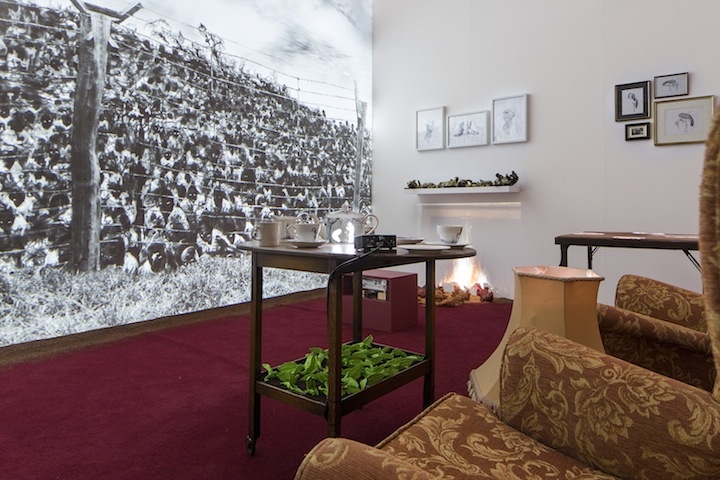Entering curator Elvira Dyangani Ose’s densely layered, multivocal exhibition through a Kader Attia installation – a narrow corridor – I was struck by how, over the years, the biennial (now in its seventh edition) has already formed an identity. Attia’s work, Los de arriba y los de abajo (The ones above and the ones below) (2015), a replica of a street in Hebron and its spatial segregation of Jewish and Muslim inhabitants, articulates the biennial’s recurring interest in contemporary history, and in artists using documentary and archival methods with a political edge.
As one of the previous curators, I might be a bit biased towards this event per se, but in my opinion A Story Within a Story is one of the strongest Göteborg Biennials so far. It builds on the documentary legacy of the earlier shows with a concentrated curatorial concept and theoretical thoughtfulness. Dyangani Ose elegantly recycles Umberto Eco’s definition of the ‘open’ artwork as a way of writing history. Past time is viewed as a growing archive of stories that can always be rewritten from a different perspective or in another voice. History becomes a collective cultural endeavour, in which this exhibition gives the artist a narrator’s role as important as that of the academic historian.
As a consequence, a recurring gesture is the use of archival fragments, photographs, films or documents. It is notable that, even today with digitalisation and the critique of the photograph as a bearer of truth, the indexical image still carries an aura of evidence. In the wide-ranging anthology that accompanies the exhibition, Achille Mbembe writes beautifully on archiving being a symbolic burial, done to ensure that the dead are separated from the living. Quite a few of the works in the show, too, could be described as archaeological rescues of forgotten historical moments from the archival tombs. Sara Jordenö’s thrilling excavation of the industrial history of the northern Swedish town of Robertsfors, The Diamond People Project (2005–15), with its unexpected links to the diamond mines of South Africa, is just one example. Even if the documentary, in its extended form, is the preferred mode of expression in the show, it is the works that take other routes that stay with me. Lynette Yiadom-Boakye’s fictional portraits have me remembering faces that never existed. Simon Starling’s evocation of a lost artwork, El Eco (2014), speaks about corporeal memory through the reenactment of a dance performance. The layered storytelling of Phoebe Boswell’s multisensory, multimedia installation The Matter of Memory (2014) takes me to Kenya’s colonial past.
A pivotal point in the exhibition is the notion of decisive moments in history – instants when the order of things was questioned – and how this struggle for change was carried on over time by certain ideas that were transformed into collective energy. Especially in focus in this show is the African continent in the process of liberation, and the way that the political activities of this epoch were connected with similar movements elsewhere in the Southern Hemisphere. Maryam Jafri’s archive of the first Independence Day ceremonies in various African, Asian and Middle Eastern countries depicts the first rituals celebrating independence, and the way that the departing colonial powers still influence the chosen protocol. Jafri’s assemblage of old photographs from very different geographical and political contexts seems to seek to decipher the narratives hidden within major historical currents: stories within stories that can tell us what really happened at these crucial moments, and whether another world was ever possible.
Various venues, Göteborg 12 September – 22 November
This article was first published in the January & February 2016 issue of ArtReview.
